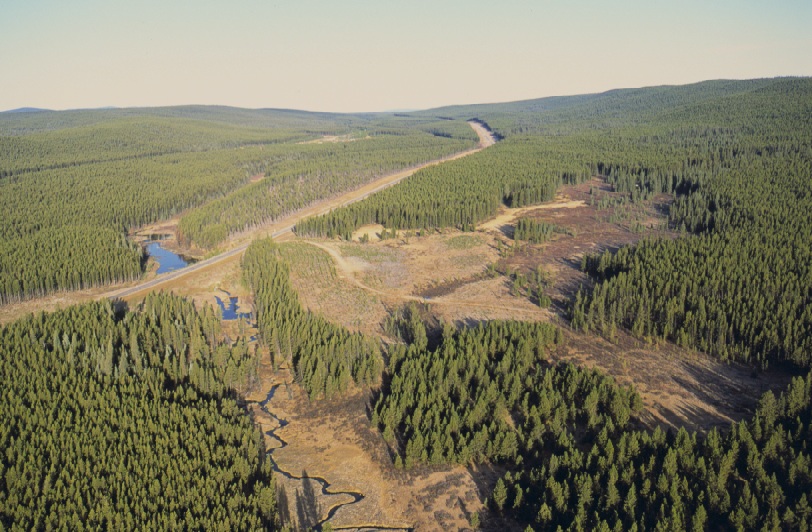Abstract
Ecosystem-based management (EBM) has emerged as a dominant paradigm for the Canadian boreal forest. One of the principles of EBM is to maintain ecosystem function by means of management activities that approximate the historic patterns or processes responsible for maintaining a range of landscape conditions. This ideal has been manifested as planning schemes are shifting away from traditional sustained yield harvests toward designs based on historic wildfire disturbance patterns. Wildfire disturbance patterns represent a coarse-filter management strategy, and are well-suited to the boreal forests of Canada. Forest management professionals in the boreal have been leaders in adopting these strategies over the past decade. However, two key questions remain unanswered: (1) to what degree have these forest management efforts resulted in disturbance patterns that resemble wildfire burning patterns?; and (2) to what degree do the other sources of anthropogenic disturbance activities align with historic wildfire patterns? In this paper, an existing knowledge of historic range of variability (HRV) of wildfire patterns and the NEPTUNE (Novel Emulation Pattern Tool for Understanding Natural Events) decision support tool were used to test both questions.
The results suggest that forest harvest disturbances better approximated historic disturbance patterns than did energy extraction disturbances, though in both cases some of the metrics were beyond the HRV. Significant differences were found between traditional dispersed patterns (e.g., multi-pass harvesting) and the more recent aggregate harvest (e.g., single-pass) designs. Aggregate harvests were characterized by low proportional area in matrix remnants, moderate levels of combined island and matrix remnants, and a high proportional area in the single largest disturbed patch (LDP). Dispersed harvests tended to have a higher proportional area in matrix remnants and better approximated the HRV in terms of proportional area in proportional island remnants area and largest island remnant. Aggregate harvest patterns did not perform as well for a few metrics such as proportional area in island remnants, mean island remnant size and largest island remnant. Overall, the results suggest that aggregate harvest designs better approximated key HRV patterns such as proportional matrix remnants and LDP, than did dispersed harvest designs on the landscape. The results also suggest that forest harvesting was significantly more effective at approximating historic disturbance patterns than the activities of the energy sector. Energy sector disturbances were smaller and had fewer island remnants than the HRV. The composition of surviving remnant trees within anthropogenic disturbance events (i.e., matrix and island remnants) remains a critical area of research for approximating HRV patterns.
For digital copies, contact: andison@bandaloop.ca
Citation
Pickell, P.D., D.W. Andison, and N.C. Coops. 2013. Characterizations of anthropogenic disturbnace patterns in the mixedwood boreal forest of Alberta, Canada. Forest Ecology and Management. 304: 243-253.







